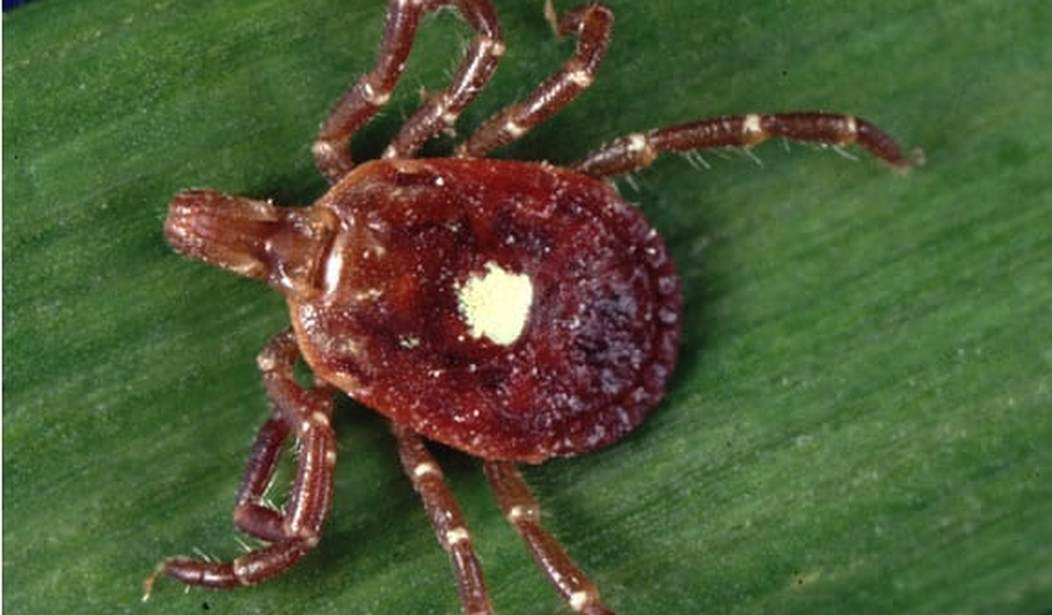Loving red meat is as American as apple pie, baseball, and bacon. Thanks to the lone star tick, two of the things on that list are becoming off limits for many Americans. Spreading an allergy to red meat and pork, the dangerous tick is moving into more and more communities across this country.
The lone star tick can be recognized by an obvious white mark on its back. Originally only found in the Northeast, the tick has migrated throughout the entire Southeast, much of the Midwest, and as far west as central Texas. And it’s on the move. Folks farther west may soon find themselves under the same threat of a red meat and pork allergy.
An article on Grist relates one man’s horror story with the tick and the accompanying allergy,
When Peter Coughlin was in his sophomore year at James Madison University in northern Virginia, he was besieged by a strange and unsettling illness. At random times throughout the night, Coughlin would wake up with hives, full body chills, and raging fevers. These episodes always ended up with him in the bathroom, throwing up until his stomach was empty.
After keeping a food journal for nearly a year, Coughlin realized his symptoms occurred after eating meat, primarily pork. “I essentially spent a week proving my point,” Coughlin says. “I’d eat a bunch of red meat, and go through a series of pretty severe reactions.”
When he finally went to the hospital in 2016, the doctor tested him for all the usual allergies and was flummoxed by the lack of results. She gave him a strong antihistamine and an EpiPen and sent him home.
Frustrated, Coughlin started researching. He found similarities between his symptoms and documented cases of something called alpha-gal allergy. A major study on the allergic reaction had been done right across the Blue Ridge Mountains at the University of Virginia.
Suddenly, his hiking trips in that very mountain range came into focus: “I kept pulling ticks off of me,” he says. According to the research, those little brown bugs, marked by a telltale white spot, were to blame for his meat allergy. Coughlin was bit by lone star ticks.
Alpha-gal isn’t your typical hayfever-like allergy. It’s a severe, delayed-reaction immune response, which means it hits hours after someone who suffers from the allergy eats meat. People with alpha-gal describe their episodes as terrifying experiences that can land you in the emergency room and change the way you live your life.
If that story wasn’t scary enough, the same article reveals this chilling detail about the lone star tick: “Lone stars, on the other hand, hunt in packs and travel at surprising speeds, emerging from the leaf litter like a swarm of thirsty, galloping lentils.”
To make matters worse, Holly Gaff, an expert on ticks and tick-borne diseases, has been studying the lone star tick and says that the ticks “seem to be invincible.”
There is some good news, though. Apparently, the lone star tick is incapable of carrying Lyme disease. Also, unlike the standard black-legged ticks, a much lower percentage of lone star ticks carry diseases—only about 10 to 20 percent. However, it’s still not worth the risk, and I think that my feet will not be stepping off of concrete until tick season is over.









Join the conversation as a VIP Member